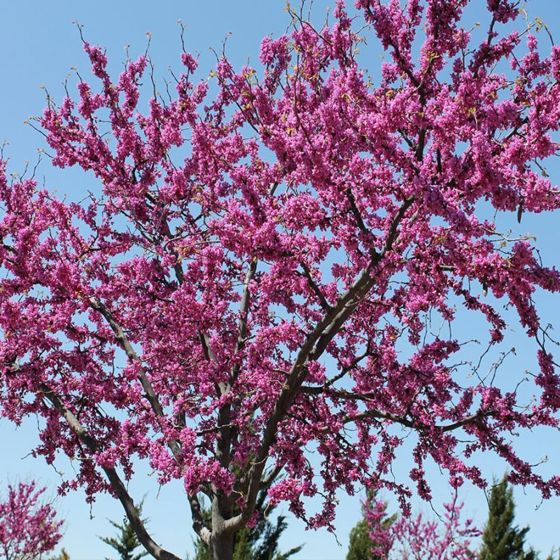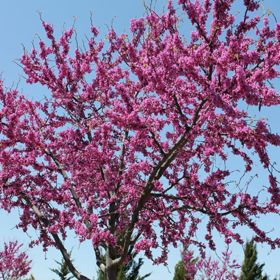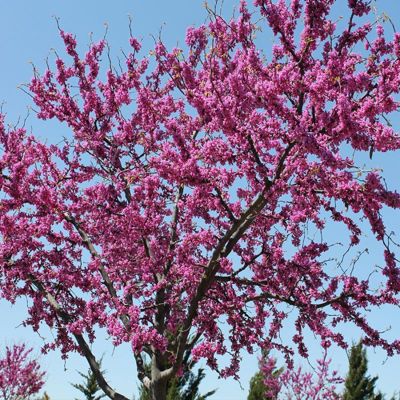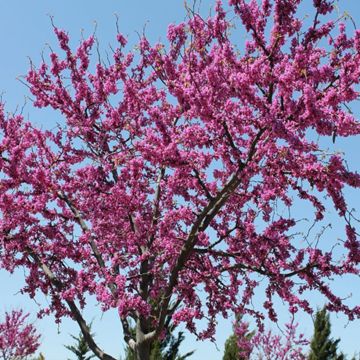Merlot Redbud Tree
Description
About the Merlot Redbud Tree
The Merlot Redbud (Cercis canadensis spp. texensis ‘Merlot’) is a stunning ornamental tree perfect for smaller landscapes. This hybrid tree features bright pink spring blooms and lustrous dark purple leaves that gradually fade to a rich purple-green in the summer. Known for its excellent drought and heat tolerance, the Merlot Redbud is a cross between the Eastern Redbud and the Texas Redbud, resulting in thicker, glossier leaves that stand up to summer heat.
Reaching 12 to 15 feet in height and width, the Merlot Redbud is ideal for residential and commercial landscapes. Its tight, dense, semi-upright habit and vibrant seasonal display add year-round interest to any garden. Cold hardy to USDA Zone 6, it thrives in various growing conditions.
How to Grow Merlot Redbud Trees
The Merlot Redbud thrives in full sun to partial shade and prefers well-drained soil with moderate moisture. Water deeply when the top 3 inches of soil are dry. This tree is low-maintenance, making it a great option for gardeners of all experience levels.
In spring, enjoy bright lavender-pink flowers that bloom before the foliage emerges. As the season progresses, glossy purple leaves provide a striking contrast against the summer landscape. In the fall, the foliage may turn a beautiful purple-green. With its moderate growth rate and compact size, the Merlot Redbud is perfect for adding color and interest to any garden.
May be covered by USPP #22,297 or other patents.
Characteristics
| Bloom Color | Purple |
| Hardiness Zone Range | 6 - 9 |
| Shade/Sun | Partial Shade - Full Sun |
| Soil Composition | Loamy |
| Soil Moisture | Well Drained - Average Moistness |
| Soil pH Level | 6.0 - 8.0 |
Zone Compatibility
Tools & Supplies
Planting & Care
Learn all about how to grow flowering trees in The Growing Guide. An entire section of our website dedicated to your growing success.









